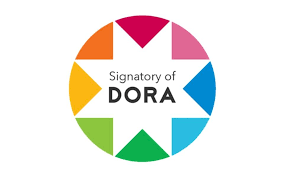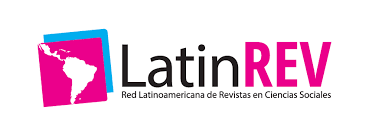Evaluation of different levels of hydrogel on the cultivation of pepper (capsicum annuum l.) to extend the periods of irrigation
Investigation article
Keywords:
irrigation, hydrogel, plant, dosisAbstract
This research was conducted in the months September to December the year 2012 of the parish Pedernales, Manabí province. In the present work, the hybrid pepper Salvador was studied, with a factorial arrangement of AxB in DBCA design. This included different irrigation frequencies (every eight twelve an sixteen day) and different doses of hydrogel (zero, one, two and three grams per plant). A tukey test at 5% probability was used as a control. In the yield of kilograms per hectare a high statistical difference was observed the highest yield came from irrigation treatments every 16 days with two grams of hydrogel per plant (40 kg/ha) and from irrigation every 12 days with 2 grams of hydrogel per plant (40 kg/ha). This produced 19, 845 and 17, 960 kilograms per hectare respectively. Thus in the economic analysis international center of corn and wheat 1988) the highest rate of return was obtained from the irrigation treatment of 16 days with two grams of hydrogel per plant. This resulted in a 45, 72%. Increase in the rate of production the most profitable treatment for the farmer.
Keywords: irrigation, hydrogel, plant, dosis.
Downloads
References
Alemán, R, Domínguez, J, Rodríguez, Y, Soria, S, Torres, R, Vargas, J, Bravo, C y Alba, J. (2018) Indicadores morfofisiológicos y productivos del pimiento sembrado en invernadero y a campo abierto en las condiciones de la Amazonía ecuatoriana. Ctro. Agr. vol.45 no.1 Santa Clara
Barón A., Barrera I., Boada L y Rodríguez G. (2007). Evaluación de hidrogeles para la aplicación forestales vol.27 no.3 ISSN 0120-5609 http://www.scielo.org.co/scielo.php?script=sci_arttext&pid=S0120-56092007000300004
Cacao J. (2017). Evaluación del hidrogel en la producción de plántulas de chile pimiento hibrido cacique, bajo las condiciones de invernadero, Teculután Zacapa. Licenciatura en ciencias hortícolas, facultad de ciencias ambientales y agrícolas, universidad Rafael Landívar Teculután Guatemala.
CIMMYT (1988). La formulación de recomendaciones a partir de datos agronómicos: Un manual metodológico de evaluación económica. Edición completamente revisada. México D.F., México: CIMMYT. Disponible en http://libcatalog.cimmyt.org/Download/cim/9031.pdf
Cheruiyot G., Sirmah P., Ng’etich W., Mengich E., Mburu F., Kimaiyo S y Bett E. (2014). Effects of Hydrogels on Soil Moisture and Growth of Cajanus cajan in Semi Arid Zone of Kongelai, West Pokot County DOI: 10.4236/ojf.2014.41006 Vol.4 No.1PP.34-37 https://www.scirp.org/journal/PaperInformation.aspx?PaperID=41750
Deker L. (2011). Adaptación de cinco híbridos de pimiento (Capsicum annuum L.) en la zona de Catarama, cantón Urdaneta provincia de Los Ríos. Tesis de Ingeniería, Facultad de Ciencias Agrarias, Universidad de Guayaquil. Guayaquil Ecuador.pag. 26 – 27
Durovic N., Pivi R y Poc V. (2012). Effects of the application of ahidrogel in different soils. Vol 53. (07) (1-4): 25-34: https://www.researchgate.net/publication/236340113
Elizondo, E y Monge, J. Evaluación de cali¬dad y rendimiento de 12 genotipos de chile dulce (Capsicum annuum L.) cultivados bajo invernadero en Costa Rica. (2017) Tec¬nología en Marcha. Vol. 30-2. Abril-Junio 2017. Pág 36-47.DOI: 10.18845/tm.v30i2.3194
Estrada, R., Lemus D., Mendoza D. y Rodríguez V. (2010) hidrogeles en agricultura. Revista Iberoamericana de Polímeros, volumen 12 (2). Disponible en http://www.ehu.eus/reviberpol/pdf/MAR11/estrada.pdf
FAO (1992). Prevención de la contaminación del agua por la agricultura y actividades afines. Chile, disponible en https://books.google.com.pe/books?id=1-uuxpntvq8C&pg=PA22&lpg=PA22&dq=agricultura+como+usuario+de+recurso+agua&source=bl&ots=lTMGzVIybe&sig=jppvCM8zOlpGuiLDN00jFVYj8QM&hl=es&sa=X&ved=0ahUKEwjG_qLGwprQAhUU7WMKHfJ8BJ4Q6AEISjAI#v=onepage&q=agricultura%20como%20usuario%20de%20recurso%20agua&f=false
FACIAG, UTB. 2011 Efecto de cuatro bioestimulantes en el crecimiento y productividad del cultivo de pimiento (Capsicum annuum L.) variedad cacique en la zona de Chaltura provincia de Imbabura, disponible en http://dspace.utb.edu.ec/bitstream/49000/120/10/T-UTB-FACIAG-AGR-000030.03.pdf
Idrobo, H., Rodríguez.; Ortiz D y Jaime E. 2010, Comportamiento del hidrogel en suelos arenosos Ingeniería de Recursos Naturales y del Ambiente, núm. 9, enero-diciembre, pp. 33-37 Universidad del Valle Cali, Colombia
http://www.redalyc.org/pdf/2311/Resumenes/Abstract_231116434004
López, J., Huez, M., Ruedas, E., Jiménez J., Rodríguez, J., Romero, L y Dávila, F. (2013). Evaluación de un polímero hidrófilo en chile anaheim (Capsicum annuum L.) cultivado en invernadero. Terra Latinoam vol.31 no.2 Chapingo. versión On-line ISSN 2395-8030versión impresa ISSN 0187-5779
Lucero M., Dreesen D y Leeuwen D. (2010). Using hydrogel filled, embedded tubes to sustain grass transplants for aridland restoration. Volume 74, Issue 8, Pages 987-990 consultado https://www.sciencedirect.com/science/article/pii/S0140196310000303
Rengifo, M. (2005). Dosis recomendada para cultivo de Pimiento. Ing. Agr. Maracaibo, Zulia, Venezuela, disponible en Email: hidrogeles@gmail.com
Sarvaš M., Pavlenda P y Takáčová E (2007). Effect of hydrogel application on survival and growth of pine seedlings in reclamations 53, 2007 (5): 204–209 https://www.agriculturejournals.cz/publicFiles/00192.pdf
Wallace, A. (1986). Effects of soil conditioners on emergence and growth of Tomato, Cotton and Lettuce seedlings. Science 141(5): 313 - 316.
Published
How to Cite
Issue
Section
License
Copyright (c) 2020 Revista Científica Multidisciplinaria SAPIENTIAE. ISSN: 2600-6030.

This work is licensed under a Creative Commons Attribution-NonCommercial-ShareAlike 4.0 International License.


2.jpg)


















